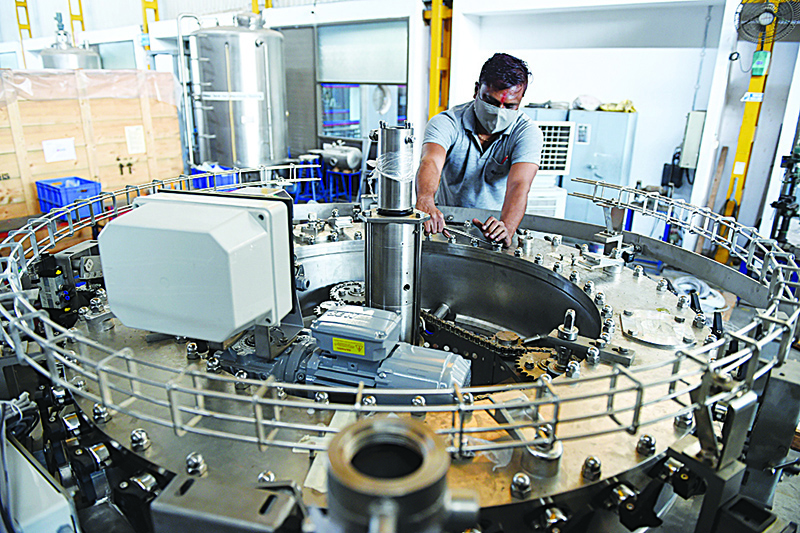

NEW DELHI: The contraction of the Indian economy eased off in the three months to September amid signs of a pickup in manufacturing, and economists expect a steady recovery next year if progress on coronavirus vaccines feeds consumer demand.
Prime Minister Narendra Modi, whose party won elections this month in the eastern state of Bihar, expects the recent easing of farm and labor laws, along with tax incentives, to bolster manufacturing and lure more foreign investment. India’s gross domestic product in July-September quarter contracted 7.5 percent on year, data released by the National Statistical Office on Friday showed, compared to a decline of 23.9 percent in the previous three months.
Analysts in a Reuters poll had forecast an 8.8 percent contraction in the latest period. Annual growth of 3.4 percent in farm sector and 0.6 percent in manufacturing during September quarter raised hopes of an early recovery as the government gears up to distribute coronavirus vaccines to a country with about 1.4 billion people. "The Q2 GDP numbers are encouraging,” said Krishnamurthy Subramanian, chief economic adviser at the ministry of finance, after the release of the data.
Citing growth in manufacturing and farm sectors, he said there were signs of a "V” shaped recovery helped by a pickup in demand for consumer and investment goods. "Overall, while the recovery provides optimism, caution on the pandemic and therefore on the economy is still warranted.”
Consumer spending - the main driver of the economy - dropped 11.3 percent year-on-year in July-September compared to a revised 26.7 percent fall in the previous quarter, data showed, while capital investments were down 7.3 percent compared to a 47.1 percent fall in the previous quarter.
The Reserve Bank of India, which has slashed its benchmark repo rate by a total of 115 basis points since March to cushion the shock from the crisis, is expected to keep rates on hold at its policy review meeting next week due to growing concerns about inflation. India - the world’s fastest-growing major economy until a few years ago - now looks to be headed for its first full-year contraction this fiscal year since 1979, according to a Reuters poll which predicted gross domestic product would take over a year to return to pre-COVID-19 levels.
Risks of second wave
Private economists, who have marginally raised growth forecasts this month, said the recovery would depend on the wider distribution of vaccines amid risks of a second wave of infections spreading to remote areas limiting the broader gains. Businesses fear new restrictions imposed by some states this week could delay a recovery while consumer demand could slow down after the festivals.
India’s tally of COVID-19 infections crossed 9.3 million to stand as the world’s second highest after the United States, with 135,715 deaths in the south Asian nation. "The resurgence of COVID cases in many geographies poses a risk to economic revival in the coming quarters,” said Anagha Deodhar, economist at ICICI Securities, Mumbai.
Deodhar like many other economists expected growth to remain negative in the December quarter and post a small positive growth in March quarter. —Reuters

